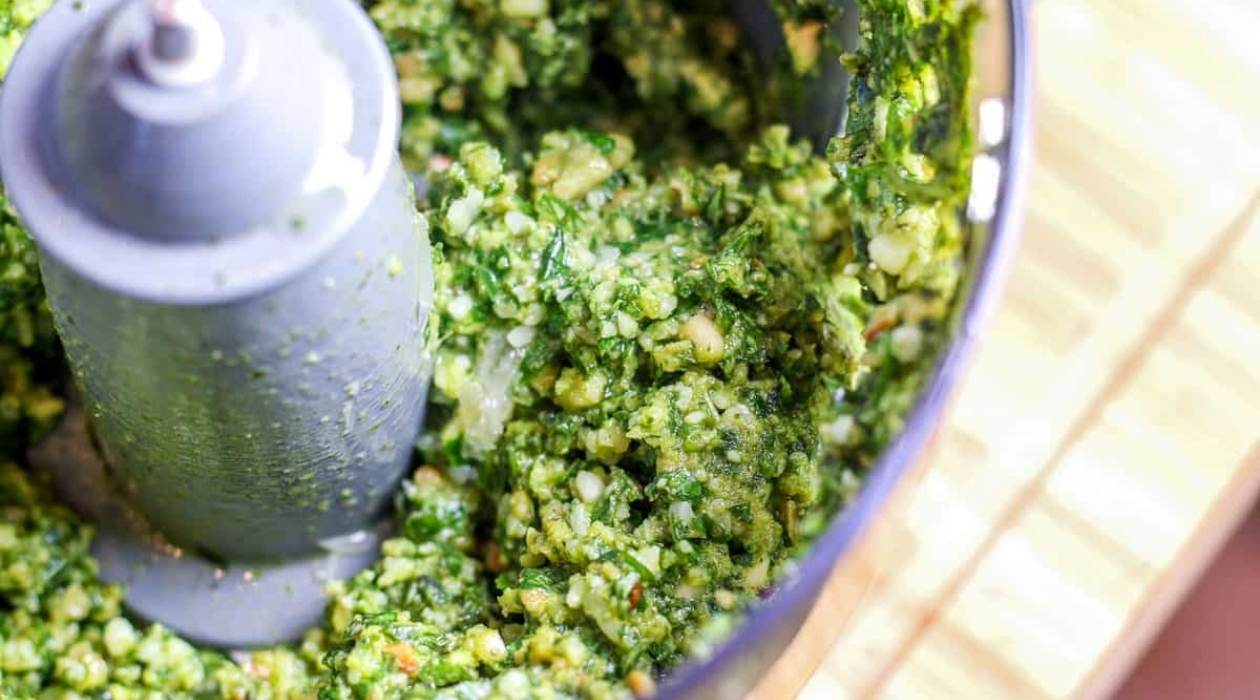

Articles
How To Store Pesto Sauce
Modified: August 25, 2024
Learn the best methods for storing pesto sauce to maintain its freshness and flavor. Read our articles for tips on proper storage techniques.
(Many of the links in this article redirect to a specific reviewed product. Your purchase of these products through affiliate links helps to generate commission for Storables.com, at no extra cost. Learn more)
Introduction
Pesto sauce is a versatile and delicious condiment, made with fresh herbs, garlic, nuts, cheese, and olive oil. Whether it’s homemade or store-bought, proper storage is essential to maintain its freshness and flavor. In this article, we will explore the reasons why storing pesto sauce correctly is important and explore various container options for storage. We will also discuss the best practices for refrigerating and freezing pesto sauce, as well as tips for maintaining its freshness.
Pesto sauce is a popular ingredient used in various dishes, such as pasta, sandwiches, pizzas, and salads. Its vibrant green color and intense flavor can elevate the taste of any meal. However, if not stored properly, pesto sauce can quickly lose its freshness, color, and taste. The exposure to air, light, and heat can cause oxidation, leading to the deterioration of the sauce.
By ensuring proper storage, you can extend the shelf life of pesto sauce and preserve its vibrant green color and rich taste. So, let’s dive into the details of how to store pesto sauce effectively.
Key Takeaways:
- Proper storage of pesto sauce is crucial to maintain its freshness, flavor, and vibrant green color. Refrigerate for short-term use and freeze for long-term preservation, ensuring delicious pesto whenever you need it.
- Use fresh ingredients, proper containers, and thoughtful thawing methods to maintain the quality of pesto sauce. Enjoy its vibrant flavor and color in various dishes, elevating your culinary creations.
Read more: How To Store Homemade Pesto
Why Proper Storage of Pesto Sauce is Important
Proper storage of pesto sauce is crucial to maintain its freshness, flavor, and vibrant green color. When exposed to air, light, and heat, pesto sauce can undergo oxidation, resulting in a loss of taste and quality.
Here are some reasons why proper storage of pesto sauce is important:
- Prolongs Shelf Life: Storing pesto sauce correctly helps extend its shelf life, allowing you to enjoy it for a longer period. This is especially important if you’ve made a large batch or purchased a larger jar of store-bought pesto.
- Preserves Flavor: Pesto sauce gets its delicious flavor from its fresh ingredients, such as basil, garlic, and nuts. Proper storage ensures that these flavors are preserved, allowing you to savor the authentic taste of pesto.
- Maintains Color: Pesto sauce is known for its vibrant green color, which adds visual appeal to any dish. Unfortunately, exposure to air and light can cause the color to fade. Proper storage helps retain the bright green hue of pesto sauce, enhancing its visual appeal.
- Prevents Contamination: Properly storing pesto sauce helps prevent contamination from bacteria and other microorganisms. Storing it in airtight containers and following hygiene practices reduces the risk of spoilage and foodborne illnesses.
- Saves Money: When you properly store pesto sauce, you can avoid waste and save money. Instead of having to throw away a spoiled batch, you can confidently use the sauce in future meals.
Overall, by storing pesto sauce correctly, you can ensure that it retains its freshness, flavor, and vibrant color, allowing you to enjoy its delicious taste in your favorite dishes.
Container Options for Storing Pesto Sauce
When it comes to storing pesto sauce, choosing the right container is essential to maintain its quality and prevent spoilage. Here are some container options you can consider:
- Glass Jars: Glass jars with airtight lids are an excellent choice for storing pesto sauce. They are non-reactive, meaning they won’t affect the taste or quality of the sauce. The transparent glass allows you to easily see the sauce’s color and check for any signs of spoilage. Make sure to clean the jars thoroughly before use to avoid any cross-contamination.
- Plastic Containers: BPA-free plastic containers with airtight seals are another option for storing pesto sauce. Look for containers specifically designed for food storage to ensure they are safe and do not leach any harmful chemicals into the sauce. Opt for containers that are freezer-safe if you plan to freeze the pesto sauce.
- Ice Cube Trays: If you prefer to store smaller portions of pesto sauce, consider using ice cube trays. Fill each compartment of the tray with a spoonful of pesto sauce, freeze it, and then transfer the frozen cubes into a freezer-safe bag or container. This method allows you to easily take out the required amount of pesto sauce for your recipes without thawing the entire batch.
- Parchment Paper or Plastic Wrap: If you have made homemade pesto and want to store it in smaller portions, you can divide it into individual servings and wrap them tightly in parchment paper or plastic wrap. This method is handy when you need a small amount of pesto sauce and want to preserve the rest for later use.
When selecting a container, ensure that it is clean, dry, and free from any odors that could transfer to the pesto sauce. Make sure the lid or seal is tight and secure to prevent air, moisture, and contaminants from entering.
Regardless of the container you choose, always label it with the date of preparation to keep track of the sauce’s freshness. Remember, proper storage containers play a vital role in maintaining the quality and flavor of pesto sauce.
Refrigerating Pesto Sauce
Refrigeration is one of the most common methods to store pesto sauce, especially if you plan to use it within a few days. Here are some steps to properly refrigerate pesto sauce:
- Transfer to an Airtight Container: If you’ve purchased store-bought pesto sauce in a jar, you can keep it in the original container. However, if you’ve made homemade pesto or have transferred it to a different container, make sure it is airtight to prevent exposure to air and moisture.
- Smooth the Surface: After transferring the pesto sauce to an airtight container, smooth the surface with the back of a spoon. This helps to eliminate any air pockets that may lead to oxidation and discoloration.
- Add a Thin Layer of Olive Oil: To create a protective barrier and prevent the pesto sauce from oxidizing, you can add a thin layer of olive oil on top of the sauce before sealing the container. This layer of oil acts as a barrier and helps maintain the vibrant green color of the sauce.
- Seal and Refrigerate: Once the pesto sauce is properly stored in an airtight container, seal the lid tightly and place it in the refrigerator. The recommended temperature for storing pesto sauce in the refrigerator is between 35 to 40 degrees Fahrenheit (2 to 4 degrees Celsius).
- Check for Spoilage: When you plan to use the refrigerated pesto sauce, check for any signs of spoilage. If you notice any mold, discoloration, off smells, or off tastes, discard the sauce immediately.
When stored correctly in the refrigerator, pesto sauce can typically last for up to 5 to 7 days. However, it is always wise to trust your senses and use your judgment when determining the freshness and quality of the sauce.
Remember, refrigeration helps to slow down the oxidation process and preserve the flavor and quality of pesto sauce, but it is not a long-term storage solution. If you don’t plan to use the sauce within a week, freezing is a better option to maintain its freshness for an extended period.
Store pesto sauce in an airtight container, covering the surface with a thin layer of olive oil to prevent oxidation. Keep it refrigerated and use within 5-7 days for best flavor.
Freezing Pesto Sauce
Freezing pesto sauce is an excellent way to preserve it for an extended period without compromising its flavor and quality. Here’s how you can freeze pesto sauce:
- Portion the Sauce: If you have a large batch of pesto sauce, divide it into smaller portions. Freezing in smaller portions allows you to thaw only the amount you need, minimizing waste.
- Choose Freezer-Safe Containers: Use airtight containers or freezer bags specifically designed for freezer storage. Ensure the containers are clean, dry, and seal tightly to prevent freezer burn and maintain the quality of the sauce.
- Fill the Containers: Pour the pesto sauce into the containers, leaving some headspace for expansion during freezing. If using freezer bags, squeeze out any excess air before sealing them.
- Label and Date: Label each container or bag with the name of the sauce and the date of freezing. This helps you keep track of the sauce’s freshness and allows you to prioritize the use of older batches.
- Freeze: Place the sealed containers in the freezer, ensuring they are placed on a flat surface to prevent leakage or spillage. Arrange them in a way that allows for easy retrieval and organization.
- Thawing: When you’re ready to use the frozen pesto sauce, transfer the desired amount to the refrigerator and let it thaw overnight. For quicker thawing, you can place the sealed container in a bowl of cold water. Avoid thawing at room temperature, as this can lead to bacteria growth.
- Storing Thawed Pesto Sauce: Once the pesto sauce is thawed, consume it within a few days. If you can’t finish it within that time, you can transfer it to a smaller container and store it in the refrigerator for an additional 2-3 days.
Frozen pesto sauce can typically maintain its quality for up to 3-4 months. However, it is recommended to consume it as soon as possible for the best taste and texture.
Keep in mind that freezing may cause slight changes in the texture of the sauce, but the flavors should remain intact. Adjust the consistency by adding a little olive oil or fresh herbs if needed after thawing.
By following these guidelines, you can enjoy the delicious taste of homemade or store-bought pesto sauce even months after it’s been frozen.
Read more: How To Store Basil Pesto
Tips for Maintaining Freshness of Pesto Sauce
To ensure that your pesto sauce remains fresh and flavorful for longer periods, here are some tips to keep in mind:
- Use Fresh Ingredients: Start with fresh and high-quality ingredients when making pesto sauce. Fresh basil, garlic, nuts, and cheese will contribute to a vibrant and flavorful sauce.
- Blanch Basil: To prevent the pesto sauce from turning brown too quickly, blanch the basil leaves in boiling water for a few seconds and then transfer them directly to a bowl of ice water. This process helps preserve the vibrant green color.
- Avoid Overblending: When preparing the pesto sauce, avoid overblending the ingredients. Overblending can lead to oxidation and discoloration. Blend until you achieve a coarse texture, which will help maintain the sauce’s freshness.
- Add Olive Oil: After transferring the pesto sauce to a storage container, add a thin layer of olive oil on top. The oil helps create a barrier between the sauce and air, reducing oxidation and maintaining its vibrant green color.
- Store in Small Batches: If you regularly use pesto sauce in smaller quantities, consider storing it in smaller containers. This reduces the exposure to air each time you open the container, preserving the overall freshness of the unused sauce.
- Regularly Stir the Sauce: If you’re storing pesto sauce in the refrigerator, regularly stir it with a clean spoon. This helps redistribute the oils, preventing them from separating and ensures consistent flavor throughout the sauce.
- Avoid Cross-Contamination: When using pesto sauce, always use clean utensils and avoid dipping directly into the container with a used spoon. This prevents cross-contamination and helps maintain the freshness and quality of the remaining sauce.
- Properly Close the Container: To avoid exposure to air and moisture, make sure the container is properly closed and sealed tightly after each use. This simple step helps prolong the freshness of the pesto sauce.
- Store in the Right Temperature: Keep the refrigerated pesto sauce at a consistent temperature between 35 to 40 degrees Fahrenheit (2 to 4 degrees Celsius). Additionally, ensure the freezer is set to 0 degrees Fahrenheit (-18 degrees Celsius) or below when freezing the sauce.
By following these tips, you can maximize the freshness and flavor of your pesto sauce, allowing you to enjoy it in various dishes with the same vibrant taste and color.
How to Thaw and Use Frozen Pesto Sauce
Thawing frozen pesto sauce properly is key to preserving its flavor and texture. Here are the steps to thaw and use frozen pesto sauce:
- Transfer to the Refrigerator: The best way to thaw frozen pesto sauce is to transfer it from the freezer to the refrigerator. Place the sealed container or bag in the refrigerator and let it thaw overnight or for about 24 hours. Slow thawing in the refrigerator helps maintain the flavors and prevent any loss of quality.
- Stir and Reincorporate: Once fully thawed, open the container, and give the pesto sauce a good stir. This helps reincorporate any separated oils or ingredients and ensures a consistent texture.
- Adjust Consistency if Necessary: Thawed pesto sauce may have thickened slightly. If it appears too thick for your liking, you can add a little olive oil to thin it out. Blend or stir until you achieve the desired consistency.
- Use as Desired: Thawed pesto sauce is now ready to be used in your favorite dishes. It can be added to pasta, spread on sandwiches or wraps, used as a dipping sauce, or incorporated in dressings and marinades. The possibilities are endless!
- Store Unused Portions: If you have any leftover thawed pesto sauce that you don’t plan to use immediately, store it in a smaller airtight container and refrigerate. This helps preserve its freshness for a few more days.
When using thawed pesto sauce, it’s important to remember that it doesn’t have the same stability as freshly made or refrigerated pesto. It’s best to use thawed pesto sauce within a few days after thawing and avoid refreezing it to maintain its optimal taste and quality.
Experiment with incorporating thawed pesto sauce into your favorite recipes or get creative and try it in new dishes. The bold flavors and vibrant green color will add a delicious twist to your culinary creations.
Conclusion
Proper storage of pesto sauce is vital in maintaining its freshness, flavor, and vibrant green color. Whether you choose to refrigerate or freeze it, following the right steps and using suitable containers can help you preserve the quality of the sauce for longer periods.
Refrigerating pesto sauce allows for short-term storage, typically lasting up to 5 to 7 days. By transferring it to an airtight container, smoothing the surface, and adding a thin layer of olive oil, you can slow down the oxidation process and maintain its vibrant color and taste.
Freezing pesto sauce is a great option for long-term storage. Dividing it into smaller portions, using freezer-safe containers, and labeling them with dates ensures organized and easy retrieval. Thawing frozen pesto sauce in the refrigerator overnight helps preserve its flavor and consistency.
To maintain the freshness of pesto sauce, use fresh ingredients, blanch basil leaves, avoid overblending, and add a layer of olive oil to create a protective barrier. Storing in small batches, regularly stirring, and properly sealing the containers also contribute to prolonged freshness.
Thawed pesto sauce can be used in various dishes, adding a burst of flavor to pastas, sandwiches, pizzas, and more. Just remember to adjust the consistency if needed and consume within a few days for the best taste and quality.
By following these guidelines, you can ensure that your pesto sauce remains delicious, vibrant, and ready to elevate your culinary creations. So go ahead, store your pesto sauce correctly, and enjoy its delightful flavors whenever you please!
Frequently Asked Questions about How To Store Pesto Sauce
Was this page helpful?
At Storables.com, we guarantee accurate and reliable information. Our content, validated by Expert Board Contributors, is crafted following stringent Editorial Policies. We're committed to providing you with well-researched, expert-backed insights for all your informational needs.
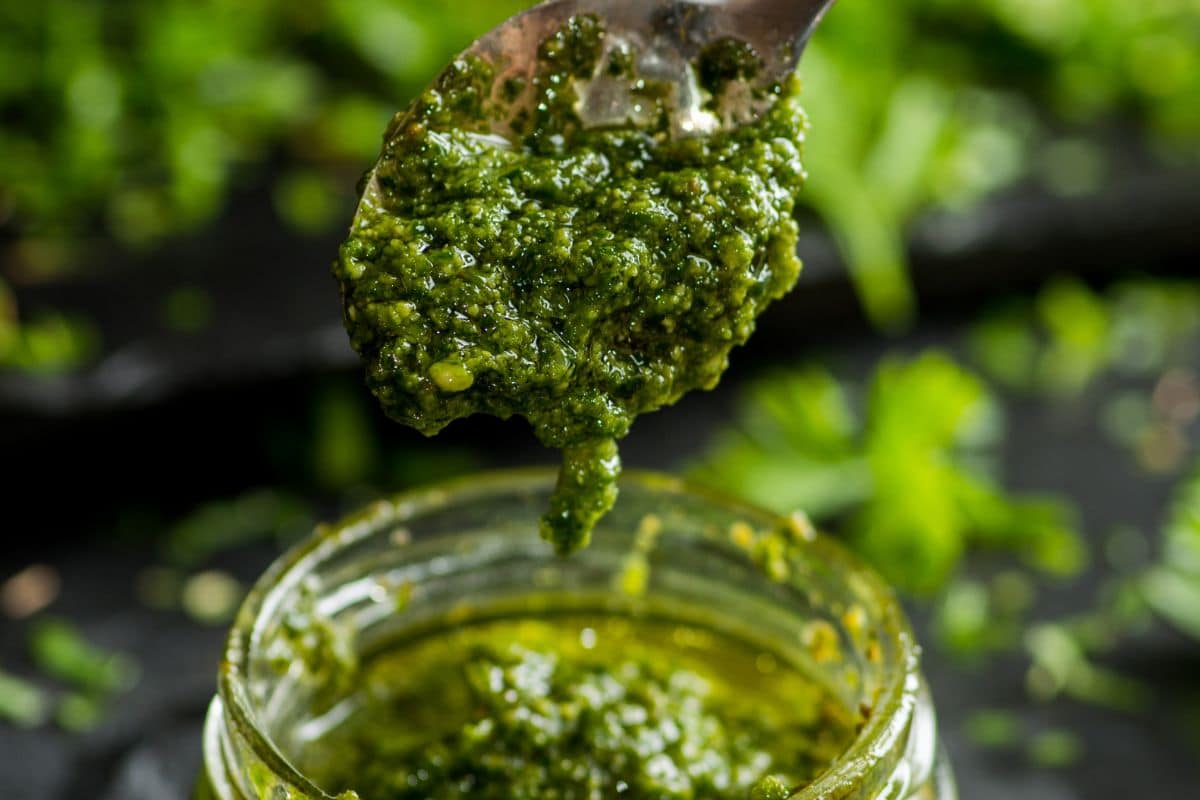
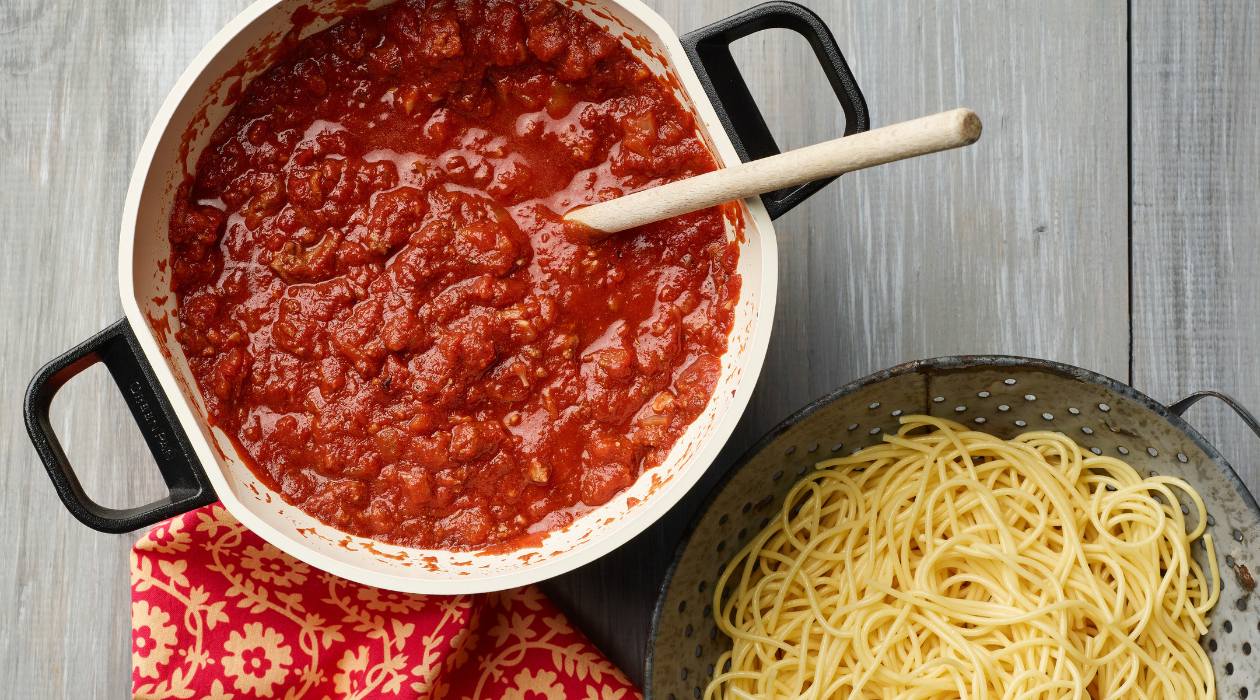



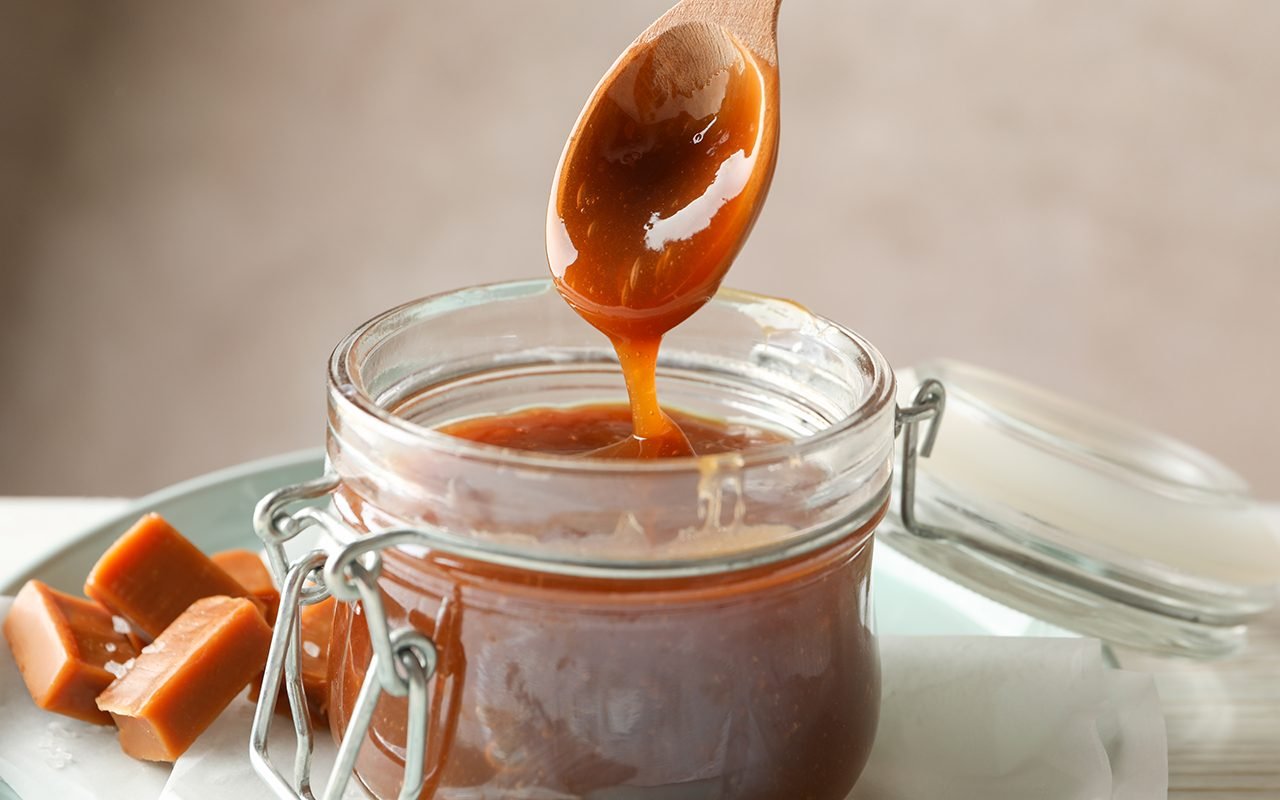

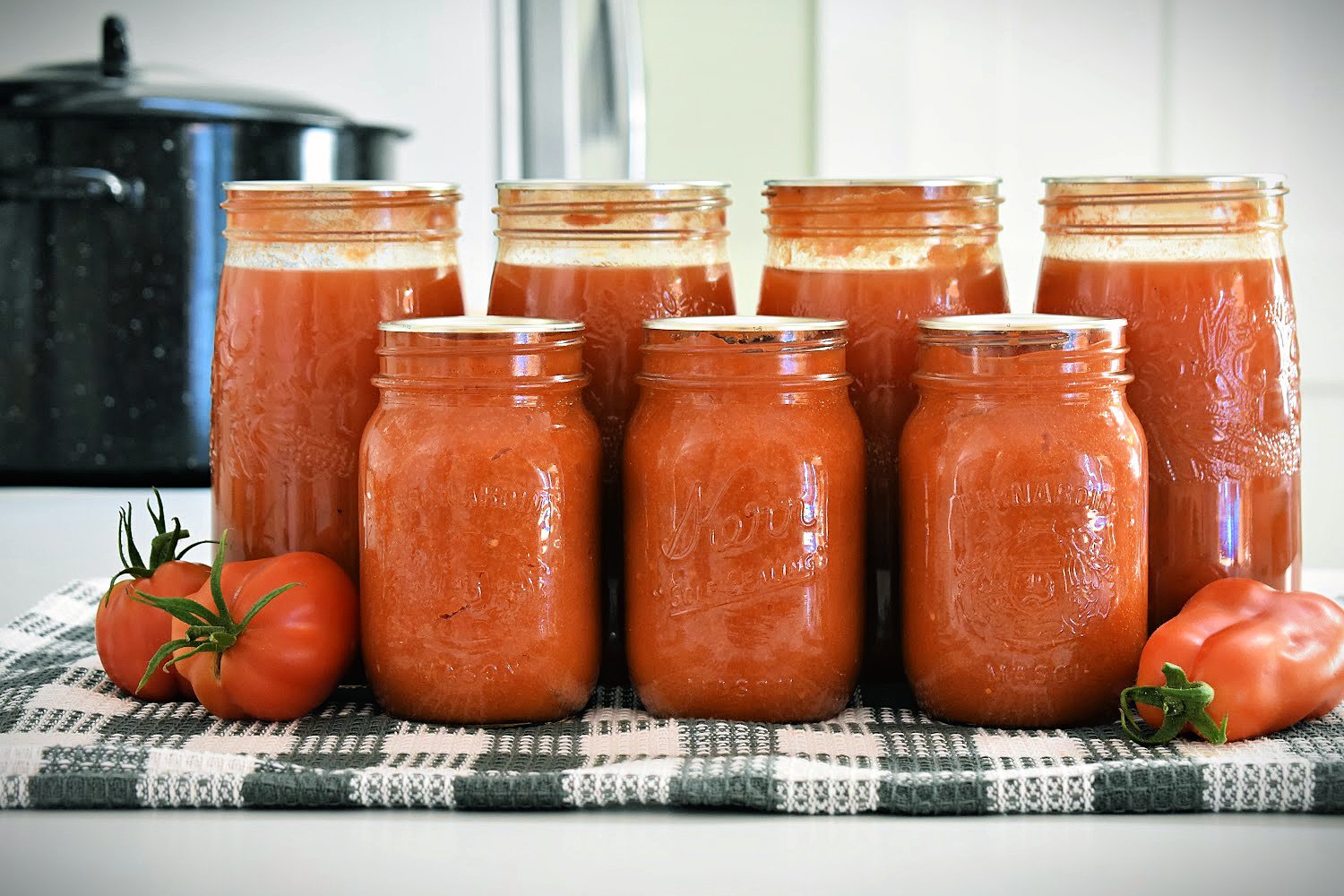
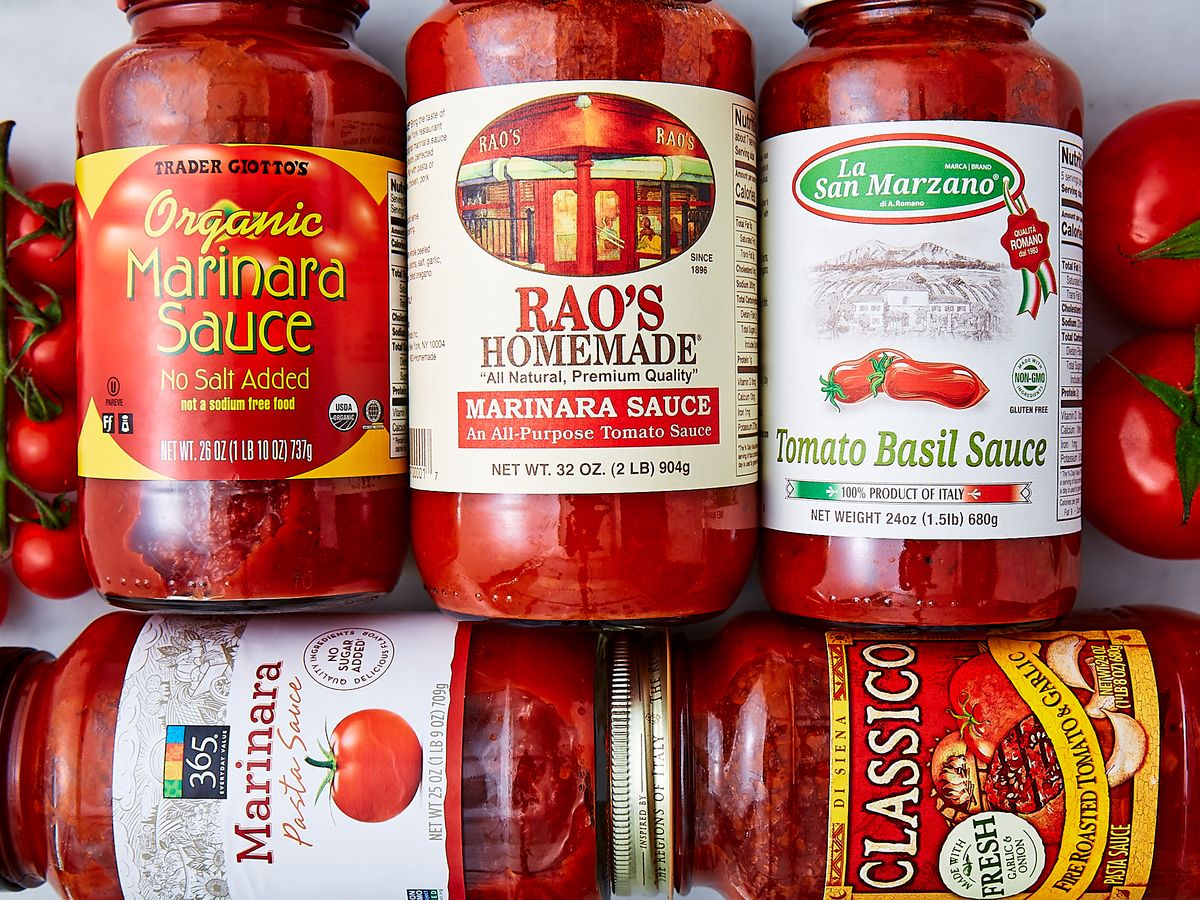


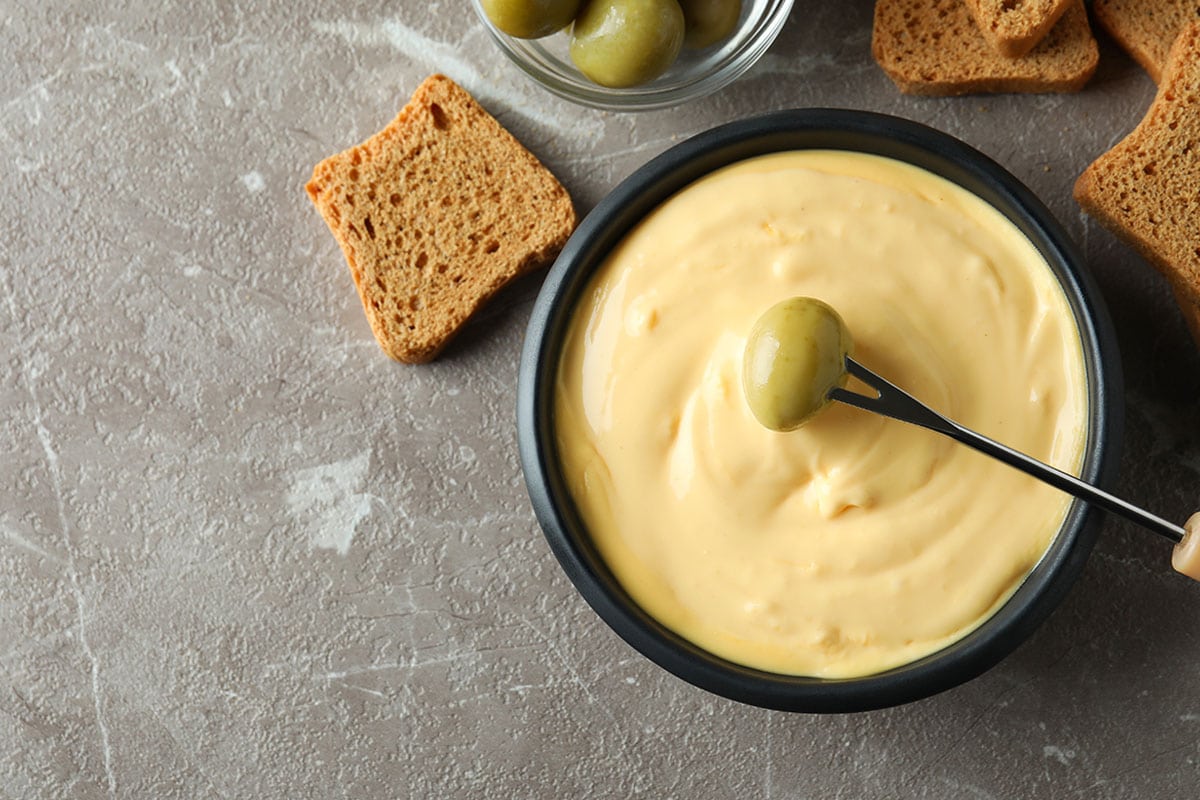
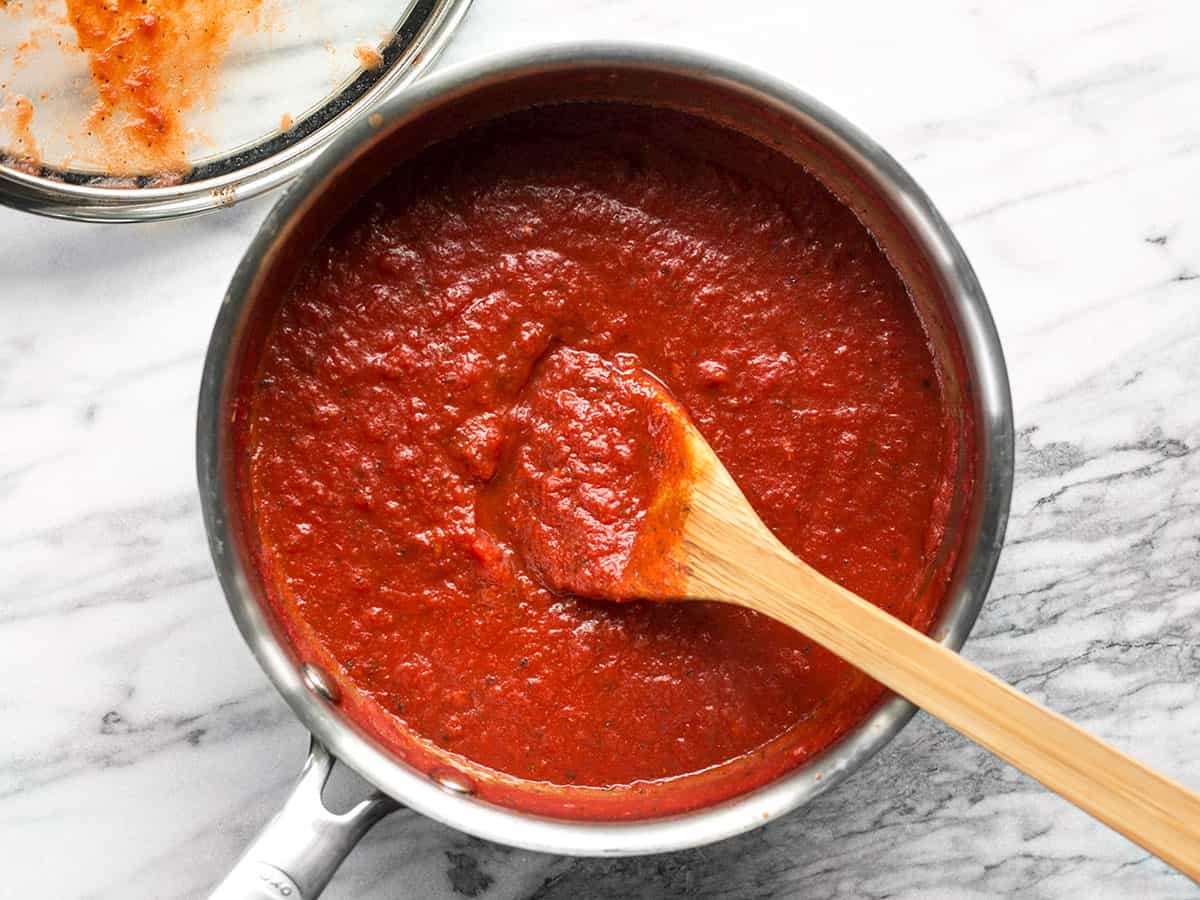
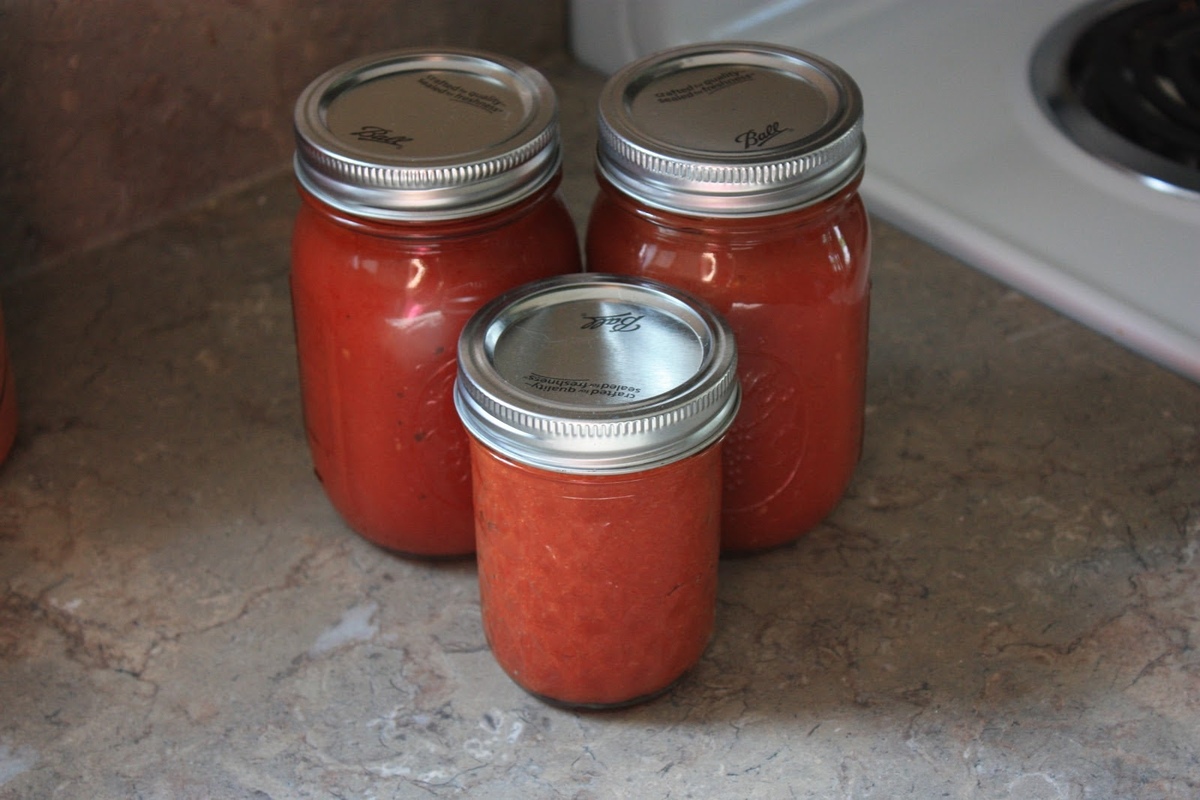

0 thoughts on “How To Store Pesto Sauce”